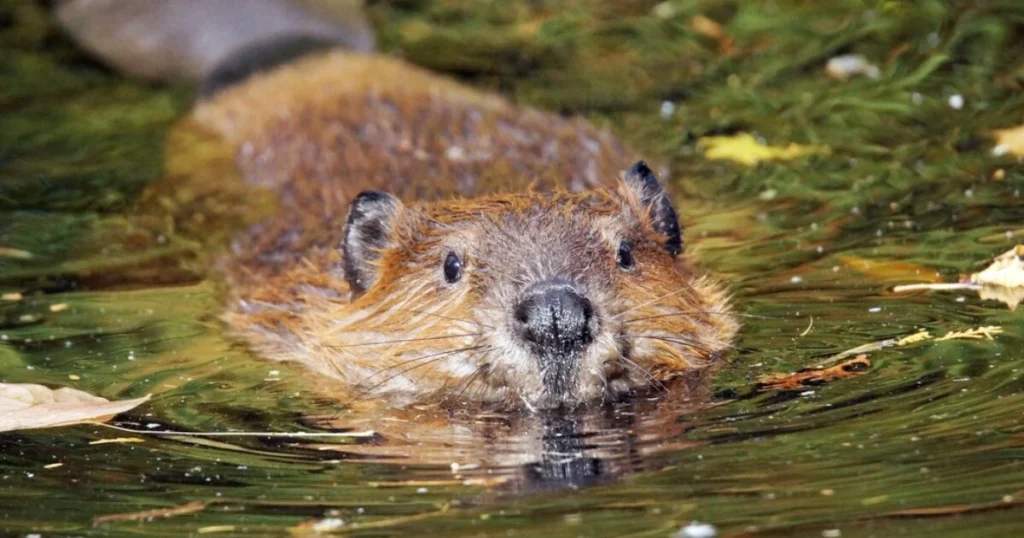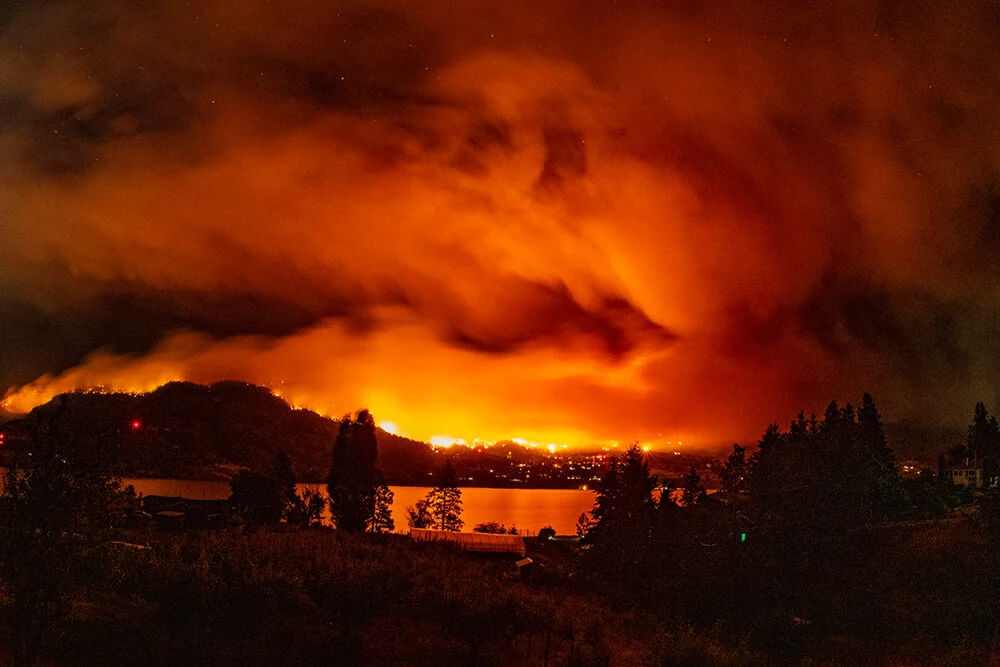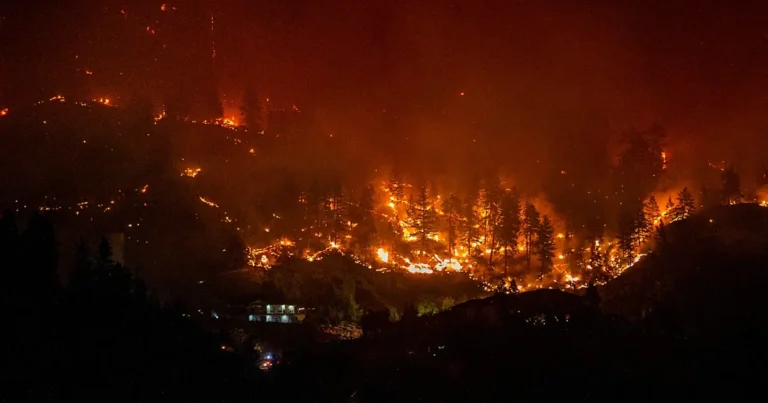
Photo by SylvieBouchard / Getty Images
This article written by The Fur-Bearers’ Aaron Hofman was originally published by the Daily Hive on September 8, 2023, and is reproduced here with permission.
The severe wildfires ignited throughout British Columbia this year have caused untold devastation to both human and non-human worlds.
While fires are a natural occurrence, this year, their destruction and magnitude are unprecedented. The climate crisis has resulted in more frequent and intense fires, with fire seasons that seem to have no end.
In Canada’s worst fire season on record, we don’t know for certain what the medium and long-term impacts will be on wildlife, and because of that, there is an urgent need to relieve pressures we can control in the face of uncertainty.

Photo by shootthebreeze / Getty Images
The impacts of forest fires are immediately felt by wildlife
Many wild animals will be directly killed by the fires themselves, unable to escape the flames, heat, and smoke. This is especially true for slower-moving animals, injured animals, and young and older animals who lack the capacity to flee the flames. Large wildfires are destroying entire ecosystems and habitats that provide natural food sources for many animal species. The negative impacts on their food sources result in malnutrition, starvation, and increased competition. There will be a loss of shelter and breeding sites, impacting population levels for many species.
But the long-term impacts these extreme wildfires will have on wildlife are difficult to predict. This uncertainty demands a policy response from the province that invokes the precautionary principle and protects wildlife from further harm. While there are many challenges that wildlife face that we cannot control, there are human-caused harms and pressures that are within our control. In response to this drastic fire season, the province needs to implement drastic measures to ensure that wildlife can rebound and flourish. This requires a pause on some of the extractive and consumptive activities that already devastate wildlife populations and habitats.
For example, beavers are still trapped for recreational and commercial purposes in British Columbia. The province issues trapping licences to a handful of individuals who remove these incredible animals from the landscape, all for their pelts that are sold to the luxury fashion industry or because people simply enjoy killing beavers as a hobby. But the value of a beaver’s pelt sold in a fur auction house is incomparable to the value of a beaver in our environment, especially during extreme climate events like drought and wildfires.
As keystone species, beavers play important roles in the ecosystem. Research has shown that beavers can help fight forest fires by creating rich wetlands that are resilient against fires and store water during droughts. These riparian ecosystems keep vegetation green during fires and can create temporary habitats for other wildlife seeking refuge from approaching flames. Beaver-created wetlands are beacons of biodiversity, providing critical habitats and food sources for many animals, including endangered species. The benefits that beavers provide to the environment and wildlife can help populations rebound and create resilient ecosystems, but unfortunately, with trapping season approaching, countless beavers will be killed this winter unless the province steps in.
How the BC government needs to step up
With special interest groups currently pushing to reopen trophy hunting of grizzly bears in British Columbia, the province needs to evaluate its consumptive activities regime and take serious steps to protect wildlife instead of catering to groups intent on killing them.
Wildlife faces incredible pressures right now, and consumptive activities make matters worse. A clear example is research showing that commercial and recreational trapping is accelerating the decline of endangered fishers in the province, with these animals being unintentionally killed by traps set for other wildlife species. These are problems that are within our control to change.
We might not be able to halt the intensity and frequency of wildfires, but we can halt the human-caused harms that intensify pressures for wildlife. Ahead of the fall and winter, when countless wild animals will be needlessly killed by humans, the province needs to introduce restrictions to stop the killing and allow wildlife to recover from the flames.
